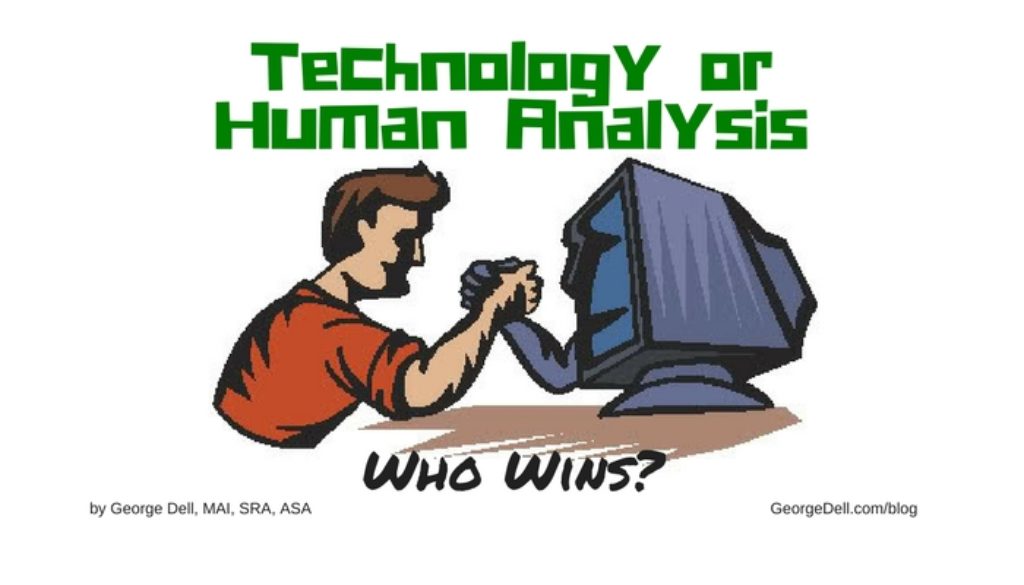There is evidence that human judgment WINS – the appraiser opinion beats the AVM and other valuations based on technology. In fact, I have often heard that the qualified appraisal, based on the human logical analysis – is the “gold standard” for the industry. This appears to be true of client groups, and appears to be recognized in administrative law, our federal and state and “quasi-governmental” bodies such as Fannie Mae, Freddie Mac, and the Appraisal Foundation.
Even as we say this, the human model, the appraiser, continues to lose market share to other technologies and other “non-appraiser” value providers.
On the other hand, it can be well argued that a computer algorithm cannot note a crack in the slab or the wall, cannot go inside the property, cannot automatically read an income statement, to see if it’s “faked up.” Technology cannot yet replace the enormous human ability to generalize. To ‘smell’ problems. To note that there are safety issues, or that it appears to have been a meth lab recently or notice a 55-gallon drum of toxic waste just inside the back gate. (That happened to me once.)
Who wins?
There is a third choice. It’s the proper use of both. Appraisers today are better because they have more data easily obtained in most areas. Appraisers today are better since they got spreadsheets to list and manipulate data and create nice tables for a narrative report. Appraisers are better because our software is better, our computer memory is bigger and faster, and our internet connection is faster than 120bps (remember?). Our delivery is faster at 2 seconds electronically than was the US mail at 2 days. And because we can draw a property diagram beautifully and accurately either in the field or at our desktop – far better than the grid paper, straight edge, and pencil drawing of only a few years ago. A camera, film we don’t have to stop at the photo finisher on the way back to the office (three copies) – then go back to pick it up again. And glue, or double sticky tape, to keep them from falling out of the report.
The third choice is, and always has been: the knowledgeable appraiser armed with good technology. Why is it that we so easily accept and use old technology, but resist new technology?
The overarching reason is that we are human. It takes effort to learn new stuff. It can be scary. I can make a mistake and look bad . . . We are human. “I need to get this report done and out, it’s late already. I will learn the new stuff later. OR, I am about ready to retire. I’m pretty good, and can stay with my comfortable ways, my easy chair, and my comfy slippers. New shoes hurt my feet. My old shoes are comfortable. My judgment really is good. I really can tell a good comp when I see it. I don’t need to understand the “five dimensions of similarity” and “nonparametric mumbo-jumbo” nor the letter “R”. My clients trust me. I give them what they expect (as USPAP says I should). I am happy.
And I don’t want to unlearn. You understand, it’s difficult to unlearn 30 years of what has always worked before. No need to rock the boat. No need to have people look at me. Challenge me.
But just in case – what are the new ways, the new words? The words are “big data” “data science” “complete data sets” “computation skills” “data visualization” and “brain-machine interface.”
But just in case, maybe I’ll read Bruce Hahn’s recent guest blog here: “Data Science Makes Appraisal Fun Again!”
No risk here . . .
